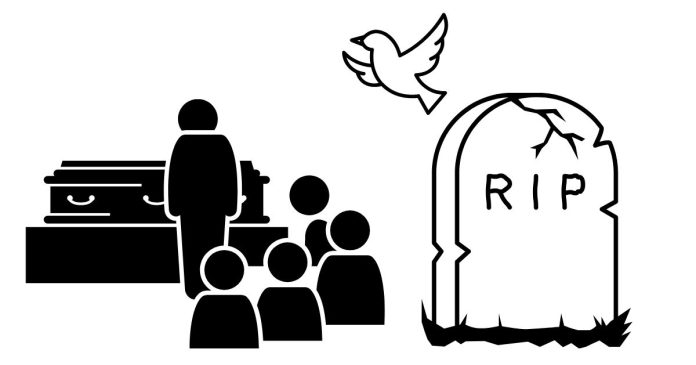The time between a person’s death and their funeral is a sensitive and deeply personal period, shaped by various factors including family preferences, religious practices, logistical considerations, and legal requirements. In the United States, this period can vary widely, and understanding the factors at play can help families make informed decisions while navigating their grief.
In this blog post, we’ll explore the typical length of time between death and funeral services in the USA, the key factors influencing this timeline, and tips for managing the process.
How Long Is the Typical Period Between Death and Funeral in the USA?
In most cases, the period between death and the funeral in the USA ranges from 3 to 7 days. However, it can sometimes be shorter or longer depending on specific circumstances.
Key Timeframes:
- Immediate Funerals: Some families, particularly those with religious traditions requiring quick burials (e.g., Islamic or Jewish practices), may hold a funeral within 24 to 48 hours of death.
- Standard Timeline: For most people, the funeral occurs within 3 to 5 days after death, allowing time for family members to gather, finalize arrangements, and complete legal formalities.
- Delayed Funerals: In cases involving logistical challenges, holidays, or awaiting the arrival of distant relatives, funerals can be delayed for a week or more. Refrigeration or embalming is often used to preserve the body in such situations.
Factors That Influence the Timeline
Several factors affect how quickly or slowly a funeral can be arranged:
1. Religious and Cultural Practices
Many religions and cultures have specific funeral traditions that dictate timing:
- Judaism: Traditional Jewish customs call for burial within 24 to 48 hours of death.
- Islam: Islamic practices also emphasize quick burials, typically within 24 hours.
- Christianity: Christian funerals may occur several days after death, depending on family preferences.
- Hinduism: In Hindu traditions, cremation usually takes place soon after death, often within 24 hours.
2. Legal and Administrative Requirements
Certain legal procedures must be completed before a funeral can take place:
- Death Certificate: Obtaining a death certificate is a legal requirement and may take 1 to 2 days, depending on the jurisdiction.
- Autopsy or Investigation: If the cause of death is unclear or suspicious, an autopsy or investigation may delay the process.
3. Family and Logistical Considerations
- Travel Arrangements: If close relatives need to travel long distances, the funeral may be delayed to accommodate their arrival.
- Venue Availability: Availability of funeral homes, cemeteries, or places of worship can affect scheduling.
- Holidays and Weekends: Scheduling may be impacted by public holidays or weekends, as some services may be limited.
4. Body Preservation
Modern preservation methods allow flexibility in funeral planning:
- Refrigeration: Keeps the body cool without the need for embalming, suitable for short delays.
- Embalming: Preserves the body for longer periods and is often used for funerals scheduled a week or more after death.
How to Plan a Funeral During This Period
Navigating the time between a loved one’s death and their funeral can be overwhelming. Here are some practical steps to help you manage the process:
1. Notify Relevant Parties
Inform close family members, friends, and any necessary authorities about the death as soon as possible. This includes notifying a funeral home, which can guide you through the next steps.
2. Choose a Funeral Home
Select a funeral home that aligns with your preferences and budget. Many funeral directors offer assistance with transportation, preservation, and ceremony planning.
3. Decide on the Type of Service
Choose the type of funeral or memorial service that best honors your loved one’s wishes. Options may include traditional funerals, cremations, or non-religious memorials.
4. Handle Legal and Administrative Details
Obtain the death certificate, notify government agencies (e.g., Social Security Administration), and start the process of managing the deceased’s estate.
5. Communicate with Family and Friends
Keep family and friends informed about the funeral date, time, and location. Use online tools or social media for broader communication if necessary.
6. Allow Time for Grieving
While the logistics can be overwhelming, remember to take moments to reflect and support one another during this difficult time.
Delaying a Funeral: What You Should Know
Sometimes, funerals must be delayed for several weeks or even months due to specific circumstances, such as waiting for loved ones to travel from abroad or accommodating personal schedules. Here’s what to keep in mind:
- Preservation Costs: Extended delays may require embalming or refrigeration, which could increase costs.
- Alternative Ceremonies: Consider holding a small memorial or virtual service before the official funeral to allow immediate mourning and closure.
Final Thoughts
The period between death and funeral services in the USA is shaped by a variety of factors, from religious traditions to logistical constraints. While the standard timeline is 3 to 7 days, families have the flexibility to adjust based on their unique needs and circumstances.
Remember, there is no “right” or “wrong” timeline. The most important thing is to create a meaningful farewell that honors your loved one and provides comfort to those who are grieving.
If you’re currently planning a funeral, don’t hesitate to seek guidance from experienced professionals and lean on your support network. This process, though challenging, can also be a time for healing and connection.
Your turn: Have you experienced unique timelines or challenges while planning a funeral? Share your insights and tips in the comments below.



